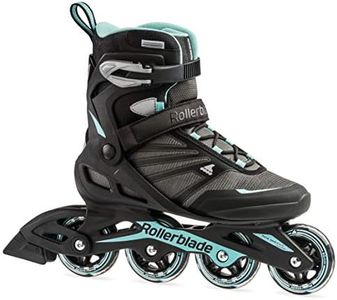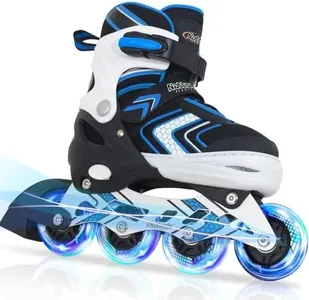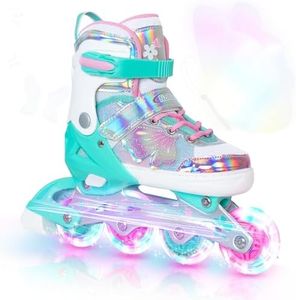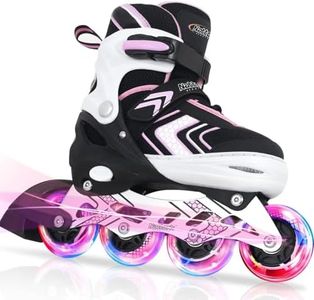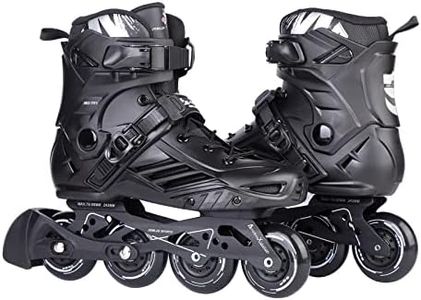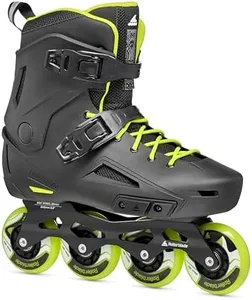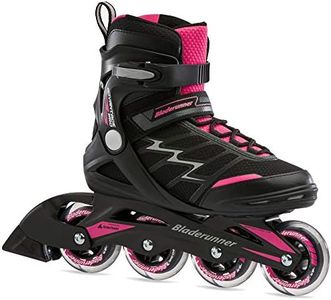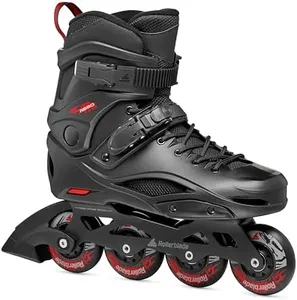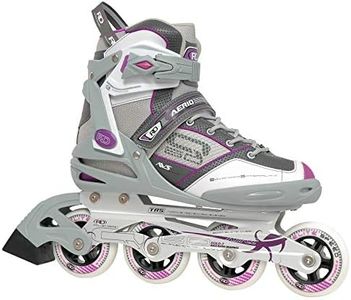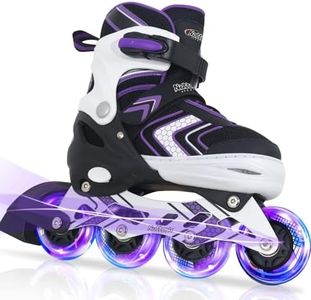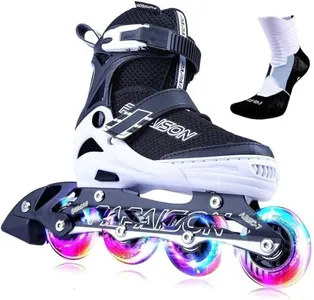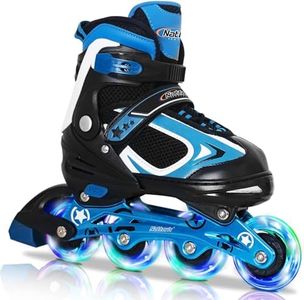We Use CookiesWe use cookies to enhance the security, performance,
functionality and for analytical and promotional activities. By continuing to browse this site you
are agreeing to our privacy policy
10 Best Inline Skates
From leading brands and best sellers available on the web.Buying Guide for the Best Inline Skates
Choosing the right pair of inline skates is all about understanding your own needs and matching them with the features that best support your goals. Different skates are designed for various skating styles, so consider how you’ll use them—whether for fitness, recreation, commuting, or aggressive tricks. Always try to find a skate that feels comfortable when you wear it, and think about the terrain you'll be skating on and your experience level. The following key specs will help you make a more informed decision.Wheel SizeWheel size refers to how big the wheels are, usually measured in millimeters. This is important because larger wheels travel faster and handle rougher surfaces more smoothly, but they can be trickier for beginners to control, while smaller wheels are easier to maneuver but won’t be as fast. Generally, wheels around 72-80mm are great for beginners since they offer good stability and control. Intermediate to advanced skaters, or those interested in cruising long distances, might prefer larger wheels (84-100mm or more) for better speed and smoother rides. Select a wheel size that matches the type of skating you want to do and your confidence on wheels.
Boot Type and FitThe boot is the part of the skate that fits around your foot and ankle. Some boots are softer (soft boots), offering more flexibility and comfort for recreational and longer skating sessions, while hard boots provide more support and protection, which is useful for aggressive or freestyle skating. The fit should be snug but not painfully tight, with enough support to keep your ankle stable. When choosing, think about whether you value comfort for longer skates or extra support for tricky maneuvers.
Bearing RatingBearings help the wheels spin, and their quality is often rated by the ABEC scale (odd numbers like ABEC-5, ABEC-7). Higher numbers usually mean smoother and potentially faster rolling, but the difference is not enormous for casual skaters. For typical use, a mid-range rating is usually fine. Only opt for higher ratings if you plan on skating at high speeds or are particularly sensitive to small differences in roll.
Frame MaterialThe frame holds the wheels and connects them to the boot. Frames are often made of plastic, aluminum, or more advanced alloys. Plastic frames are lighter and more affordable but less durable and responsive than metal frames. Aluminum frames are sturdier and can transfer energy better, leading to improved speed and responsiveness—helpful for fitness or advanced skaters. If you’re a beginner, a plastic frame usually suffices, while more experienced or performance-focused skaters may prefer metal.
Closure SystemThe closure system secures the skate to your foot. Common types include traditional laces, velcro straps, ratchet buckles, or a combination. Laces offer an adjustable fit, buckles provide quick securing and extra ankle support, and velcro is good for easy adjustment. The right choice depends on how much support you want, how quickly you want to get your skates on or off, and your personal comfort preferences.
Brake TypeMost beginner and fitness skates come with a heel brake, which helps control speed and stop safely. Some advanced or aggressive skates might not have brakes, requiring toe stops or alternative stopping techniques. If you’re new to skating, having a built-in brake is helpful for safety and confidence. If you’re experienced and comfortable stopping without a brake, or you’re focusing on tricks, you might be fine without one.

